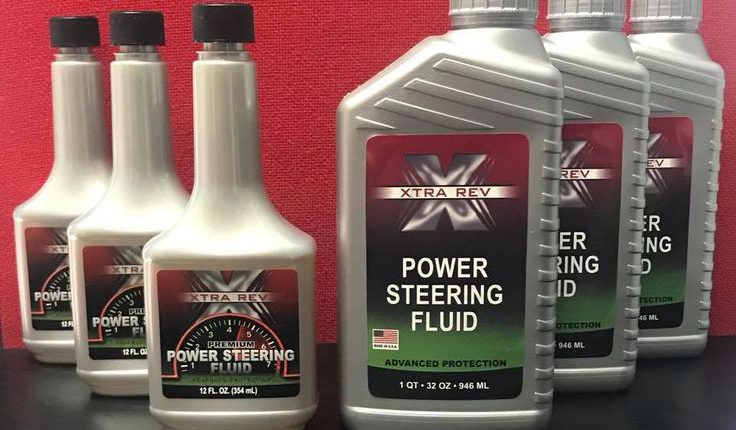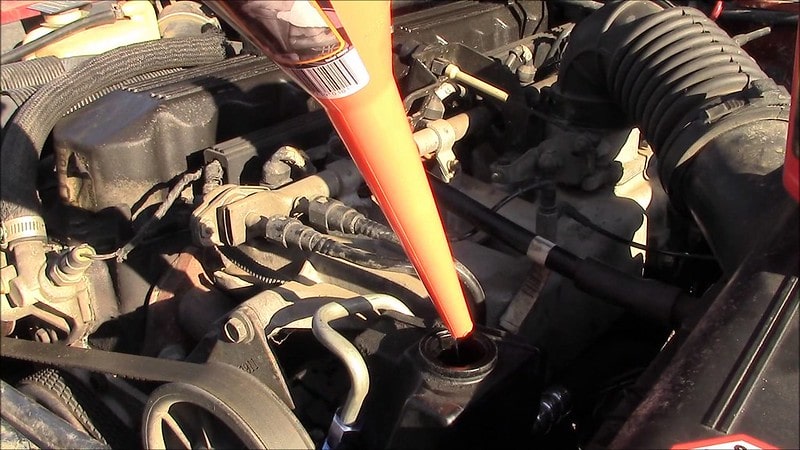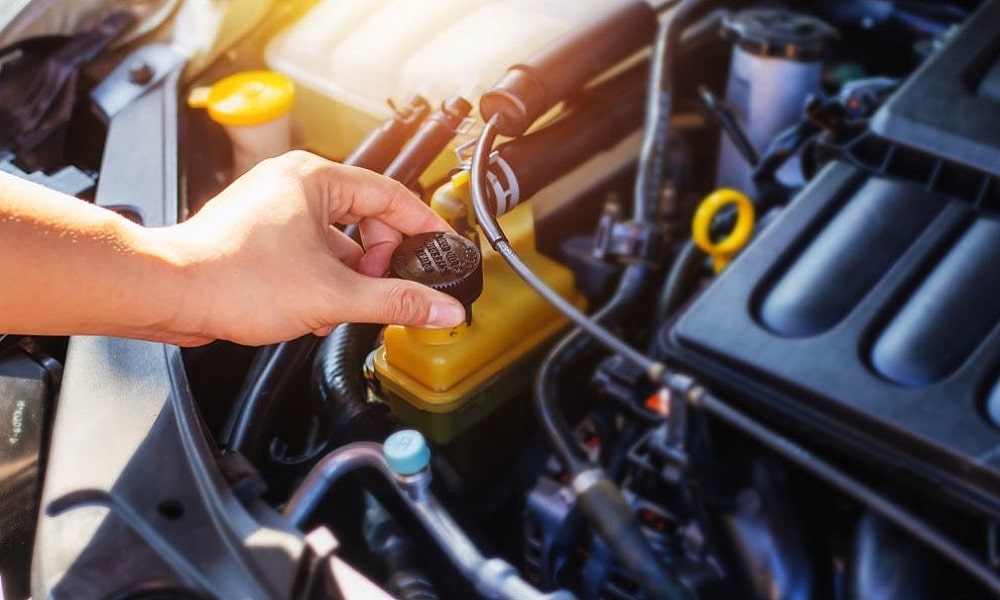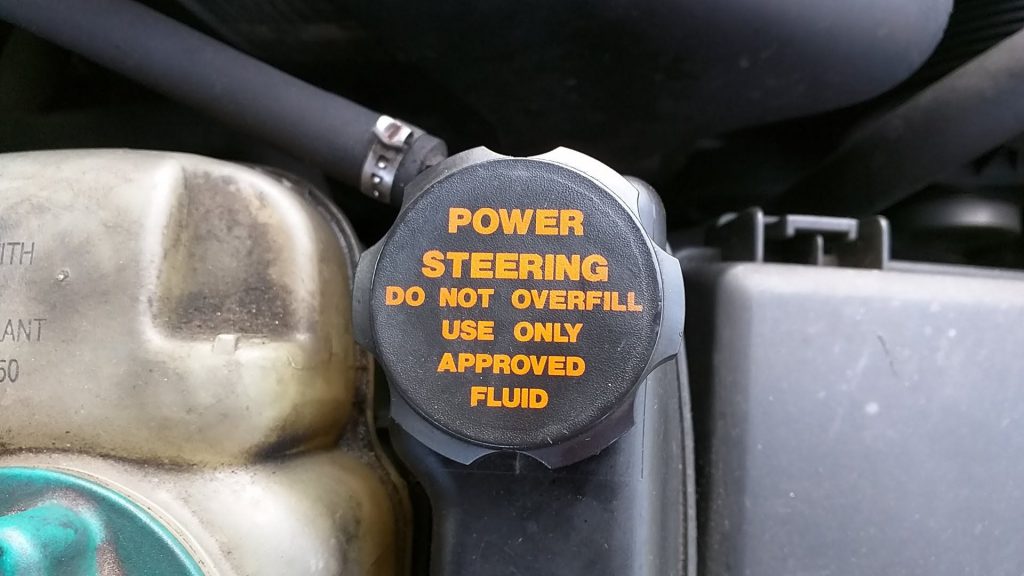“It’s better to have excess than lack” Do you think the thought is always right in every situation? It can be right in some circumstances, but it will not be ideal when you apply it for filling your power steering tank. The article, Car From Japan will tell you about the consequences and symptoms of overfilled power steering fluid. Read on for no more unresolved annoyances!
Contents
What Is The Purpose Of Powering Steering Fluid?
Currently, all car models have an additional power steering system to make the vehicle operation safer and more flexible. However, in order for this system to be stable, specialized lubricants are required. So how does a power steering fluid work? Power Steering Fluid is a special auxiliary fluid that lubricates the hydraulic system (pump, valve) of power steering. Power steering oil helps the driver handle the steering wheel more easily, helping the driver not need to use too much force while still operating the car accurately and smoothly.
In the hydraulic power steering system, this fluid plays a very important role in creating the thrust of the rack, to support the steering wheel to rotate as the driver wants. If the vehicle lacks power steering fluid, the steering system will be affected. Specifically, when the oil pressure does not reach the required level, the force is not enough, leading to the phenomenon of heavy oil power steering, and slow return of steering…

How Much Power Steering Fluid Does A Car Hold?
There is no set amount for how much power steering fluid is enough for your car? It will depend on each model as well as the unique requirements of each vehicle and it will make the identification process of fluid volume a little more difficult than you think.
To know exactly how much the power steering fluid is left? You can use the oil dipstick. If you are using the dipstick to check the power steering fluid level, first wipe off excess oil from the dipstick when you take it out of the cylinder, then plug it back down and take it out. The second way is that you can easily observe with visuals. If the reservoir cylinder is made of transparent plastic, you can see the oil level inside the cylinder. In some vehicles, the power steering fluid level can only be accurately checked after the engine has been running for a short time, and you may also occasionally have to turn the steering wheel in multiple directions a few times while the vehicle is at an idle state.
On the dipstick or on the oil tank there are usually lines marking the maximum and minimum levels. If the oil level is near or below the maximum, the power steering fluid top-up. In other vehicles, the level on the dipstick or cylinder is both “high”, after the engine is running, and a “low” level after the engine has been turned off for a while. Or, there may be “Min” and “Maximum” lines of operable oil level. Be sure to compare the power steering fluid level with the standard level.
For the quantity you need to buy, a one-liter bottle will suffice to fill, while you will want about two liters for a flush.
What Happens If You Overfilled Power Steering Fluid?
Is it bad to overfill power steering fluid? This action doesn’t cause damage to the power steering system. But it may give you other adverse consequences. Overfilling your car’s power steering fluid can cause leakage which can reach the reservoir. This can then cause foaming of the hydraulic fluid which can shorten the life of your system, also when the fluid gets in expense and it may force its way out of the reservoir. The common symptoms are described below:
Fluid leakage and make a mess for your engine
During the first stage, it is easy to ignore the symptoms because there is not any trouble for your car. However, do not be subjective! When you overfill your power steering reservoir, it spills. When the engine starts to increase the temperature under the hood, the steering fluid starts to expand. Over time, the liquid will accumulate in a lot of places that it shouldn’t, for example in your engine belts. Before you know it, belts can slip or break and will make your engine not operate.
However, the consequences do not stop there, when the power steering fluid expands due to the heat, this liquid will spill from the reservoir and make your engine become a mess. And in some serious scenarios, your engine will work too much until it catches on fire and completely fails. Read here can many drivers wonder “ Is power steering fluid flammable?” Our answer is “No”, it only burns in certain circumstances.
Specifically, “Any fluid that catches the fire and has a flash point equal to or below 199.4 degrees F is considered a liquid” following the OSHA. The power steering fluid only burns at a hot enough temperature, specifically, when the ambient temperature reaches 400 degrees F. However, this temperature can be fully reached when your engine is overloaded so in the event that the fluid is spilled, fire is inevitable.

Engine parts are prone to wear
We should fill up the power steering as the mark mentioned on the reservoir, or on the dipstick. If the fluid is too much, it can cause air bubbles or foam inside the pipelines during your fill. And the consequences will reduce the performance of your steering, and make it hard to turn.
When the power steering is leaked, it will seep into other parts of the engine compartment such as batteries, belts, etc., which will affect the performance of these parts and make them wear out faster.
>> Related post: What Happens If You Drive The Car With Low Power Steering Fluid?
How To Drain Excess Power Steering Fluid?
We have shared with you the consequences of filling too much power steering fluid. How to remove overfilled power steering fluid? There are a few different methods you could use to flush your power steering fluid to reach the ideal level of the fluid for the steering system.
Using a turkey baster or syringe
An effective way to help you extract excess liquid is to use a syringe or turkey baster. It can be a tedious process or time-consuming but it is considered one of the best methods compared to some other expensive ways. If you don’t want to waste excess fluid after sucking, you can use a container to hold this liquid and prevent this liquid from splashing out which will contaminate your engine compartment.
You can use this method when replacing the old fluid with the new one. Use a Turkey Baster to suck out all the old fluid. Then add the new power steering fluid and you’re done. However, when sucking the fluid in this way, it can only absorb the oil in the tank, not all the power steering fluid in the system. Therefore, a few more steps are required. Specifically, after the first suction, add a little new fluid to the tank, then drive for about 15-20 minutes to let the new fluid mix with the old oil. Next, use Turkey Baster to suck out all the oil. Then continue to put new oil in, run the car and suck the fluid out.
Flushing the power steering fluid
With the car jacked up and the wheels off the ground, we can easily do the step. But compared to the use of the syringe, this method will be a little complicated. Because you will have to add one more step: lifting your car.
Step 1: Use the car jack to raise the undercarriage.
Step 2: Unplug the oil hose to the return hose, and attach the plastic tube instead. Remember to raise the other end of the plastic tube so that the power steering fluid doesn’t leak out.
Step 3: Set the return hose on the reservoir to hold the excess fluid.
Step 4: Start the car, steer the wheel all the way from left to right, and vice versa. This will help the fluid in the steering to flow down the return hose.
Step 5: Turn off the car engine, reinstall the return hose as before, and remember to tighten the nut firmly.
Step 6: Start your car again, and turn the steering wheel all the way from left to right and vice versa so that the vehicle does not have air foam in the system.
>> Read more: How to Flush Power Steering Fluid in Your Garage
When Should You Change The Power Steering Fluid?

According to recommendations from car manufacturers, the time to change the power steering oil periodically is every 60,000 – 80,000 km. Under normal operating conditions, power steering oil is rarely lost quickly. However, if the vehicle shows the following signs, it is necessary to check the power steering oil:
The steering system makes strange noises: When the car is low on the power steering fluid, the steering system often makes a noise, especially when the car is moving slowly.
The steering wheel is heavy and difficult to rotate: Because the power steering system is malfunctioning, the steering wheel will be heavy and difficult to rotate.
Slow return of steering: When there is a shortage of power steering oil, the oil pressure decreases, and the steering wheel will move more slowly than usual, causing the steering wheel to slow down.
The steering wheel suddenly jerks or vibrates slightly: This phenomenon happens when the car is moving slowly.
Leak power steering fluid: If you see traces under the car, it may be because the car has a power steering oil leak. This is the cause of the car’s loss of fluid.
Final Thoughts: Can You Overfill Power Steering Fluid?
To ensure a smooth and precise steering system, you should not only need to check and change the power steering oil. But we recommend you notice the level of the fluid in the reservoir. Overfill is always not good, it can lead to catastrophic issues. We hope that our sharings will help you find a useful way to deal with the symptoms of the overfilled power steering fluid. And you know when to check your engine.



